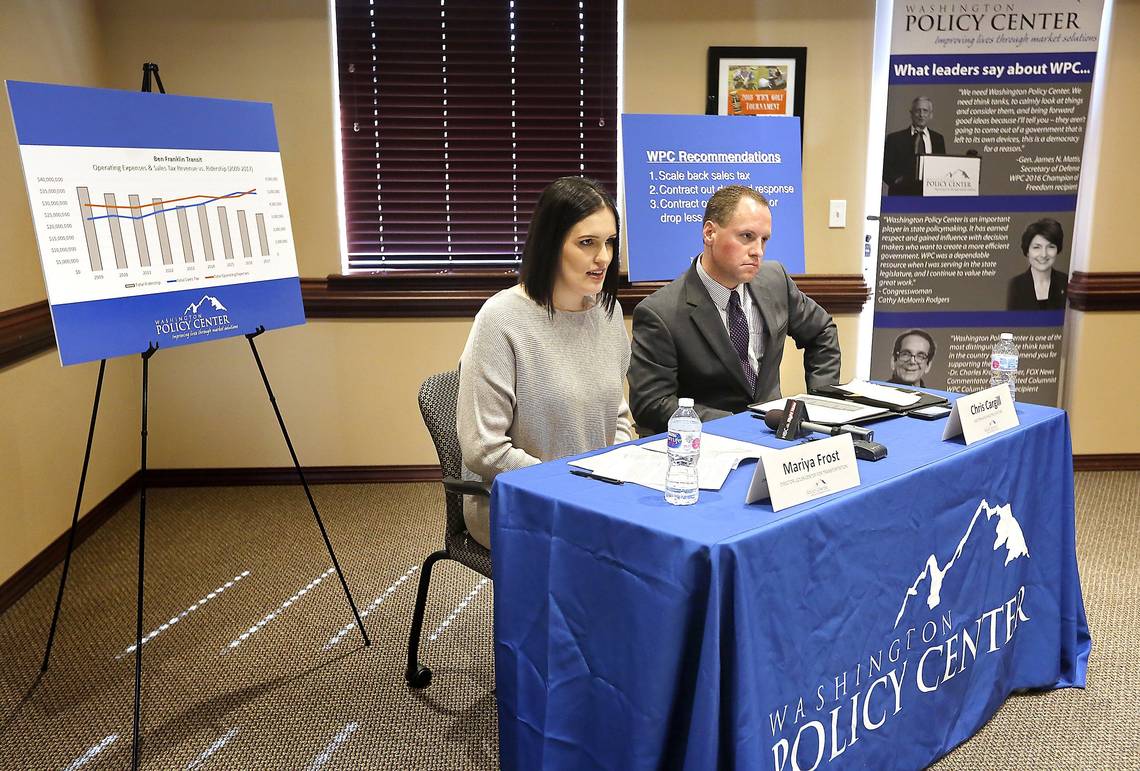Click here for media coverage of WPC's press conference on this issue
Key Findings
- Ben Franklin Transit officials continue to collect taxes and increase spending as total ridership declines.
- Between 2009 and 2017, total ridership at BFT declined by 40 percent. Population grew 15 percent over the same period.
- Between 2009 and 2017, bus ridership declined 41 percent, vanpool ridership declined 48 percent, and demand response ridership declined 23 percent.
- Despite large ridership losses, between 2009 and 2017, operating expenses increased 20 percent, and sales tax revenue collections increased 44 percent.
- When BFT operates a demand response vehicle, it costs more than twice as much as a privately-contracted taxi.
Introduction
Ben Franklin Transit (BFT) is a Public Transportation Benefit Authority that serves the growing Tri-Cities region (Richland-Pasco-Kennewick Metro) by providing fixed route bus, demand response, and vanpool services.
This study presents the third comprehensive review of BFT conducted by Washington Policy Center over the past decade. The previous two studies showed concerning trends at the transit agency from 1996 to 2009, and again between 2009 to 2013, providing a multi-decade outlook on BFT’s services. Agency officials said increasing costs were a result of inflation and federal safety regulations, while ridership was cyclical and that most transit agencies were starting to see ridership “rebound from the economic downturn.”
Five years later, however, new research shows serious problems still plague the agency. Declining ridership has not stabilized or improved as officials promised. Ridership has plummeted while BFT officials continue to collect increasing amounts of sales tax and to increase the agency’s spending.
Instead of downsizing in line with a declining customer base, the agency introduced free Wi-Fi, new routes, and extended hours in 2017 in an effort to attract ridership. Though these services likely improve the experience of those on the BFT system – which is important – agency leaders should ask whether increasing spending while ridership continues to freefall is the best way to spend public dollars.
This study finds that rather than continuing to expand a failing system using public money with the hope that it will “work” once it reaches a certain size or aesthetic, BFT should instead scale back the existing 0.6 percent sales tax they impose on the public, reducing costs, and becoming a leaner, more cost-effective public agency for those who depend on and use transit for mobility.




